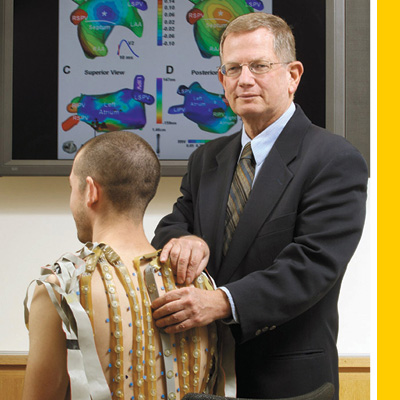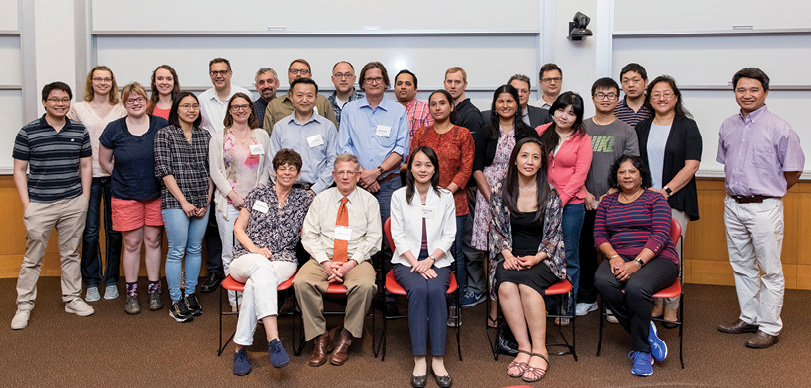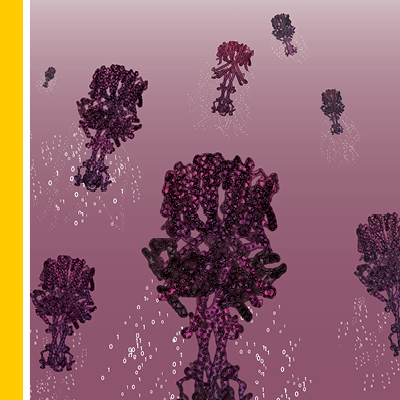Yoram Rudy retires
For biomedical engineer Yoram Rudy, a new chapter awaits
It’s no wonder that after such a long, accomplished and productive career, Yoram Rudy is not quite ready to retire from his life’s work. Yes, he stepped down at the end of 2022 from his role as director of the Cardiac Bioelectricity and Arrhythmia Center — which he founded in 2004 — to become emeritus professor, but he sees this next step as yet another opportunity to begin anew. With a life defined by an inquisitiveness that has furthered the field of biomedicine, Rudy has trained and inspired a new generation of bioengineers as they make their own discoveries in service to humanity.
“It’s not just my work, it’s my passion,” said Rudy, the Fred Saigh Distinguished Professor of Engineering in the Washington University McKelvey School of Engineering. He also is professor of medicine, of cell biology and physiology, of radiology and of pediatrics in the School of Medicine. Rudy and his team have labored to develop computational biologic tools and imaging methods to study arrhythmia mechanisms at all levels of the cardiac system, from molecule to the whole heart. With a mission to train graduate students and conduct research in cardiac electrophysiology and electrocardiology, his lab has produced innovative approaches for the diagnosis, prevention and treatment of cardiac arrhythmias that can lead to sudden death. As well, 30 doctoral students have graduated under his tutelage and continue the work by pursuing careers in academic research and in the biomedical industry.
Born and raised in Tel Aviv, Rudy comes from a family that highly values education.

“Both parents also were very passionate about art and music,” Rudy said, “and I am a classical music and jazz enthusiast. To me, science and art are very intimately connected through the imaginative creative process. I agree with Albert Einstein — whom I greatly admire — who once said, ‘Logic can get you from A to Z, but imagination will take you everywhere.’”
After high school, Rudy spent a mandatory three years of service as an officer in Israel’s military. The commander of the officers academy, renowned Col. Meir Pa’il, taught Rudy the importance of planning, tactics and strategies.
“He told us to always remember that every plan is subject to change,” he said. “In retrospect, from a life and a science perspective, it’s good advice. Rigidity is counterproductive.”
Rudy earned undergraduate and graduate degrees in physics from Technion, Haifa, Israel, in 1971 and 1973, respectively, focusing his graduate work on the quantum theory of superconductivity.
“It was all very abstract and very elegant work,” he said. “But I found that the human dimension was missing for me; I wanted a more human-related application for my work.”
Gravitating toward the life sciences, he moved to Cleveland and began a doctorate in biomedical engineering at Case Western Reserve University. He studied under Robert Plonsey, an expert in electromagnetic waves and a founding father of the new science of biomedical engineering. The two collaborated on calculating the relationship between body surface and cardic electrical potentials.
After earning a doctorate in 1978, he began teaching at Case Western, eventually becoming professor of biomedical engineering, physiology and biophysics, and medicine as well as director of its Cardiac Bioelectricity Research and Training Center.

In 2004, Washington University offered him the directorship of the Cardiac Bioelectricity and Arrhythmia Center.
Named the Fred Saigh Distinguished Professor of Engineering, Rudy took it upon himself to learn a bit about baseball and Fred Saigh, the former owner of the St. Louis Cardinals. He also learned about baseball legend and St. Louis native Yogi Berra. “I enjoy his adages, especially, ‘When you see a fork in the road, take it.’”
That thought has come to Rudy again and again over the years as he counseled his doctoral students to take risks.
“It’s important to sometimes go sideways at a problem and explore the back roads that you really didn’t plan on taking,” he said of nurturing creativity.

Computer-generated molecular structure of a cardiac ion channel.
Rudy also credits the five years he spent traveling back and forth to Oxford University as a Royal Academy of Engineering Distinguished Visiting Fellow, which broadened his perspective on science, research and education.
For more information about Rudy’s research and center: cbac.wustl.edu
According to Rudy, many of his aha! moments usually happened during the interpretation of data in the effort to extract principles from the results of an experiment or theoretical modeling. He recalled a car trip he took with a graduate student between Cleveland and Penn State. The two had been working on computer modeling of the conduction of electricity in the heart.
“Electricity travels in waves through the heart muscle,” he explained. “We were trying to formulate this process with equations to devise a measure of the safety of the conduction processes. We struggled and struggled. During the drive we were listening to the radio, and it came to us. We were not talking about it or discussing it, but all of a sudden it came.
And the safety of discontinuous conduction is now recognized as one of the principles of cardiac electricity. It’s a fantastic moment — all of a sudden you see the idea crystalize. To extract a core principle, a model should be as economical as possible. One should make the model simple, but not too simple. It should contain all the important elements that are needed to answer a specific question, yet be simple enough so the concept could be described to a child.”
As Rudy winds down his work at Washington University — passing the torch to the next generation of biomedical engineers — he still intends to keep his hand in the work as emeritus professor. He and his wife, Hadas, will be moving back to Tel Aviv.
“It’s a new beginning for us,” he said.
“Life is like riding a bicycle,” Rudy said, quoting again from his favorite theoretical physicist Albert Einstein. “To keep your balance, you must keep moving.”
Back to Engineering Momentum
